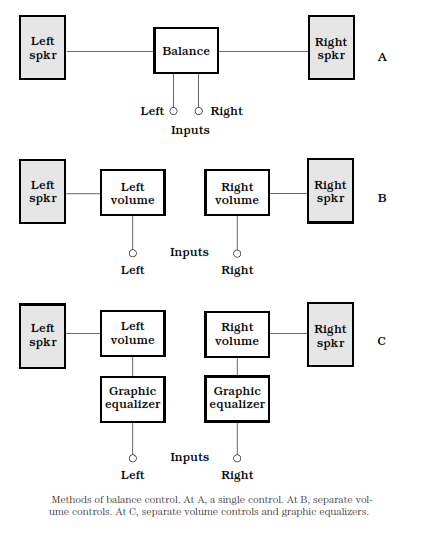Balance Control
In hi-fi stereo sound equipment, balance control allows adjustment of the relative volumes of left and right channels.In the simple hi-fi receivers, tape players, and amplifiers, the balance control consists of the single knob. This knob is connected to the pair of potentiometers. When the knob is rotated counterclockwise, left-channel volume increases and right-channel,

Figure--Methods of balance control. At point A, a single control. At point B, separate volume controls. At point C, separate volume controls and graphic equalizers.
volume decreases. When knob is rotated clockwise, right-channel volume increases and the left-channel volume decreases.In sophisticated sound systems, balance is adjusted by 2 volume controls, one for left channel and the other for right channel. The most advanced sound systems use independent volume controls and graphic equalizers for the 2 channels. The gi8ven figures are functional block diagrams showing general circuits for these methods of balance control.
Proper balance is significant for the faithful stereo sound reproduction. A balance control can compensate for such factors as variations in the speaker placement, relative loudness in channels, and acoustics of room in which the hi-fi equipment is installed. Adjustment of balance control(s) can sometimes be aided by use of a VU meter in every channel. However, best overall results are often obtained by simply adjusting balance control until the system produces most pleasing sound.